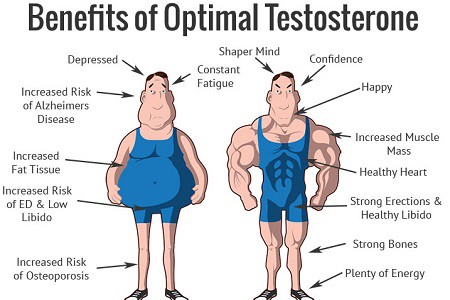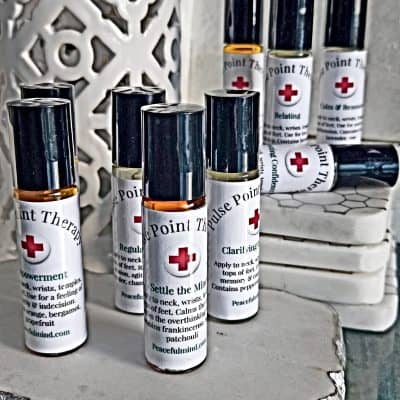
Sex
To find and exalt in this fulfillment.
Color: Red, Black, Orange
Stone: Carnelian, Chrysoprase, Smoky Quartz, Ruby
Essential Oil: Patchouli, Jasmine, Ylang Ylang
Incense: Aphrodisia, Full Moon
Tea: Aphrodisia, Energy, Four Ginseng
Herb: Yohimbe, Ginseng
Guiding Principle: “Appeal” “Tantric Unions”
The Metaphysics of Sex
Traditionally, metaphysics refers to the branch of philosophy that attempts to understand the fundamental nature of all reality, whether visible or invisible. It seeks a description so basic, so essentially simple, so all-inclusive that it applies to everything, whether divine or human or anything else. It attempts to tell what anything must be like in order to be at all.
Our sexual health is one of the most important elements of our whole being and natural existence and yet, one that is often shunned, ignored or found to be down right “dirty”. A mentor of mine once said, “You should look at EVERY person as a sexual being!”.
Tantra uses the energies of the body and sometimes the sexual energies, to transcend worldly attachments. Pleasure teaches us how to connect. It assists us in learning to feel more love, greater touch, and emotional healing. Sacred sexuality goes beyond this to teach us about the deeper inner realms of our psyche and provides us with true understanding and compassion. Through passionate, sensual awareness you can increase the quality of your sexual life.
On this page. “Allow the power of sex and the Universe to transcend all boundaries of prejudice, ignorance and disbelief.” Learn the 20 sacred sexual secrets. Discover the difference between great sex and sexual addiction. Know how to have safe sex. Enhance your love making with supplements for love, lust and libido and find out about your sexual health and terminology.
-

Angel’s Mist Jasmine Absolute Essential Oil
$ 23.00 -

Angel’s Mist Neroli Essential Oil
$ 18.00 -

Angel’s Mist Sandalwood Essential Oil
$ 23.00 -

Angel’s Mist Ylang Ylang Essential Oil
$ 23.00 -

Aphrodisiac Tea
$ 8.95 -
Sale!

Ashwagandha 500 mg 90 tabs
Original price was: $ 38.00.$ 34.95Current price is: $ 34.95. -

Aura Vibrational Myst
$ 14.95 -

Auralite Perfume
$ 38.00 -

Beltane Resin Incense
$ 4.95 -

Ben-Wa Balls
$ 19.95 -

Black Forest Myst
$ 14.95 -

Chrysin 500
$ 29.95 -

Circulatory Health
$ 21.95 -

Crystal Elixir Oils
$ 11.95 -

Fire Element Drop Necklace
$ 34.95 -

Full Moon Candle
$ 14.95 -

Full Moon Ritual Kit
$ 29.95 -
Sale!

Gem Eessence Tincture
Original price was: $ 19.95.$ 14.95Current price is: $ 14.95. -

Golden Dragon Mystic Perfume
$ 28.00 -

Gyno Clear
$ 38.00 -

India’s Sweetest Flower Incense
$ 5.95 -

Intrigue Perfume
$ 32.00 -

Jasmine Incense Cones
$ 4.95 -

Law of Attraction Crystal Pouch
$ 21.95 -

Law of Attraction Perfume
$ 24.00 -

Lodestone Mojo Kit
$ 21.95 -

Love Romance Course
$ 259.95 -

Love Romance Course PLUS
$ 279.95 -

Male Performance Formula
$ 38.00 -

Meditation and Journal Kit
$ 49.95 -

Mystic MOON Glow Essential Oil Blends
$ 9.95 -

New Moon Candle
$ 14.95 -

New Moon Ritual Kit
$ 29.95 -

New Moon/Full Moon Candle Set
$ 27.95 -

Passion Potion Perfume Oil
$ 24.95 -

Priority of Life Kit Sex
$ 29.95 -

Sacred Intention Incense Sticks
$ 6.95 -

Sandalwood Incense Cones
$ 4.95 -

Summer of Love Essential Oil Blends
$ 11.95 -

Tar Water
$ 14.95 -
Sale!

Testosterone Booster Pak
Original price was: $ 79.00.$ 67.50Current price is: $ 67.50. -
Sale!

Vedic Chakra Bath Perfume Oil Set
Original price was: $ 105.00.$ 94.00Current price is: $ 94.00. -

Vedic Chakra Bath Perfume Oils
$ 14.95


Sexual Health
Our most sexual organ is the brain! Our minds can create the most perfect fantasies or sexual relationships. It is the power of our minds that can enhance the desired sexual experiences and is what realizes our Sexual Health.
Sexual health refers to the many factors that impact sexual function and reproduction. These factors include a variety of physical, mental and emotional issues. Disorders that affect any of these factors can impact a person’s physical and emotional health, as well as his or her relationships and self-image.
Aspect of our sexual health may include whether anyone will find us sexually desirable, whether we will ever enjoy sex again, whether we can still have children or whether our sexual partners will stay with us.
Sexual Esteem
Our “sexual self-esteem” or positive reverence is the level of comfort and ease we have with our own sexuality. It is the ability to feel confident in who we are, what we enjoy, and to understand the need to experience sex in a positive and healing light. We need to look at sex in a satisfying and enjoyable way. We must all be aware of our sexual health and see it as a very important part of our well being.
Knowing who we are, what we enjoy, and how we enjoy it, is the sexual “comfort-ability” that is essential for understanding one of the most basic needs we have as humans.
Want to know more?

Tantric Energy: Sacred Sexuality
Passion: is feeling physically aroused and attracted to someone. Passion is what makes you feel “in love” and is the feeling most associated with love. It also rises quickly and strongly influences and biases your judgment. Passionate love involves continuously thinking about the loved one and also involves warm sexual feelings and powerful emotional reactions.
The Tantric school of thought combines the principles of yoga and meditation to weave together sensuality and spirituality. It is rooted in ancient Hindu and Buddhist texts and practices dating back to the sixth century A.D.
A loose tradition to begin with, Tantric teachings offer no clear record of their origins, even when it comes to the meaning of the term Tantra, which has been variously defined as “web,” “weaving,” “expansion,” and “liberation.” No matter what the definition, at the heart of Tantra is honest communication, creating intimacy and realization.
Realization that your self is infinite and beyond space and time. Realization that leads to complete peace of mind and contentment. It does not require you to change your spiritual beliefs in order for the process to work.

Top 20 Sacred Sexual Secrets
Our sexual health is one of the most important elements of our whole being and natural existence, and yet one that is often shunned, ignored or found to be downright “dirty.” A mentor of mine once said, “You should look at EVERY person as a sexual being!”
Here are my top 20 sacred sexual secrets for any relationship…

Supplements for Love, Lust and Libido
Every culture has it’s own history and knowledge of aphrodisiacs. Whether it is from their own cultural surroundings or from myths, stories or objects. Even plants were labeled as such because of their shapes and textures. Staying healthy is your best and number one bet for a great sex life! About 43 percent of women and 31 percent of men suffer sexual inadequacy for one reason or another.

Safe Sex Tips
Safer sex is about protecting yourself and your partners from sexually transmitted infections. Safer sex helps you stay healthy and can even make sex better. Not worrying about high risk behavior puts your mind at ease to full enjoy yourself. No matter what your status, sexual preference, desires or fantasies…safe sex makes everything a little more confidence boosting and opens you up to more pleasure.

Sexy Scents for Love and Romance
Try something new and different with your lover. Combine the art of massage with the magic of aromatic massage oils. This sensual mix stirs the senses and can send sparks flying between sweethearts. Also try diffusing any one of these oils in the air to spark the senses! You will find a cornucopia of sexy scents, aromatic blends and the power of scent over your euphoric senses!

Sacred Jewels for Exploring
From the phallus stones to the deep red crystals that stir our “sexual-self esteem”, passion is endowed by the power of the rock hard stones in this “favorites collection”. These are some of the most notable crystals throughout history that have been traded for virginity, offered as a sacred sacrifices and given as gifts to allure its receiver!

How To Boost Testosterone Levels
In men, symptoms of low testosterone may show as signs of hormonal issues such as changes in hair growth or sexual function. The quality, quantity, morphology and motility of a man’s sperm is also looked at.Physical examination and routine laboratory tests for men include: Hormone testing, Physical examination and Semen analysis. Raise testosterone naturally without the harmful side effects!

National Infertility Awareness
Infertility is often defined when a couple has 1 year of regular intercourse without contraception and has been unable to conceive. Primary infertility is seen when a couple has never been able to conceive, where as secondary infertility is difficulty conceiving after already having conceived and carried a normal pregnancy.

Are you Addicted?
Sexual addiction is rapidly becoming recognized as a major social problem with similarities more well-known to alcohol and drug addiction or compulsive gambling. Based on a 10-year research study of 1500 sexual addicts, it has been estimated that about 8% of the total population of men in the US and about 3% of women are sexually addicted, Do have a problem with sex…?
Sexual Health and Terminology
A * B * C * D * E * F * G * H * I * J * K * L * M * N * O * P * Q * R * S * T * U * V * W * X * Y * Z
A
Abdominal Hysterectomy: The surgical removal of the uterus through an incision in the abdomen.
Adenocarcinomas: Cancer that begins in the cells lining the glands of the body.
Acquired Immune Deficiency Syndrome (AIDS): A viral infection that attacks the immune system of the body and causes a syndrome in which many different, harmful organisms can attack the body and cause disease.
Amenorrhea: When a woman does not get her monthly period.
Amputation of the Penis: (See penectomy.)
Antibiotics: Medicines that kill infection-causing germs.
Antidepressants: Medications used to treat depression.
Anti-Hypertensives: Medications used to treat high blood pressure.
Anti-Inflammatory Drugs: Drugs that reduce inflammation (swelling) by modifying the body’s immune response.
Aanorgasmia: The delay or absence of sexual climax (orgasm).
Anus: The opening of the rectum to the outside of the body.
Bacterial Vaginosis: The most common vaginal infection in women of reproductive age. Bacterial vaginosis often causes a vaginal discharge that is thin and milky, and is described as having a “fishy” odor. Bacterial vaginosis is caused by a combination of several bacteria.
Balanitis: An inflammation of the skin covering the head of the penis.
Balanoposthitis: Inflammation of the head and the foreskin of the penis.
Bartholin’s Glands: The small, mucus-producing glands on either side of the vaginal opening.
Benign: Not cancer, as in a benign tumor.
Biological Therapy: A treatment that uses the body’s own immune system to fight cancer. It uses materials made by the body or made in a laboratory to boost, direct or restore the body’s natural defenses against disease. Biological treatment is sometimes called biological response modifier (BRM) therapy.
Biopsy: The removal of a small sample of tissue for testing.
Birth Control: A way for men and women to prevent pregnancy.
Bisexual: A person who is attracted to members of either gender.
Bladder: The sac that holds urine.
Blood Test: A procedure in which a sample of blood is taken and analyzed in a laboratory for evidence of infection or disease.
Bulbourethral Glands (Cowper’s glands): Pea-sized structures located on the sides of the urethra just below the prostate gland. These glands produce a clear, slippery fluid that empties directly into the urethra. This fluid serves to lubricate the urethra and to neutralize any acidity that may be present due to residual drops of urine in the urethra.
Cancer: A disease that occurs when abnormal cells in a part of the body divide and grow out of control.
Candida: A species of fungus that normally lives in small numbers in the vagina, as well as in the mouth and digestive tract of both men and women.
Carcinomas: A type of cancer that arises from the lining cells of the body, called epithelial cells. Epithelial cells form the outer layer of the skin, and the membranes lining the digestive tract, bladder and uterus, as well as the tubes and ducts that run through the body’s organs.
Carcinoma in situ: This is a condition that is considered a pre-cancer, because cancer cells are found on the surface of the organ or tissue. (“In situ” literally means “in its proper place.”)
Cervix: The lowest part of the womb, or uterus, through which babies pass when they are born.
Cervical Cancer: Cancer that occurs when abnormal cells in a woman’s cervix — the lowest part of the uterus (womb) through which babies pass when they are born — divide and grow out of control.
Cervical Biopsy: A procedure in which the doctor removes a small amount of tissue from the cervix to be examined more closely.
Chemotherapy: The use of drugs to kill cancer cells.
Chest X-ray: X-rays use high-energy radiation in low doses to create images of the body to help diagnose diseases and determine the extent of injuries. A chest X-ray is done to check that the heart and lungs are healthy.
Chlamydia: A germ that is primarily sexually transmitted and that can infect genital organs.
Chronic Hepatitis: An ongoing infection of the liver that can lead to cirrhosis, a hardening of the liver that causes liver tissue to scar and stop working.
Circumcision: An operation in which the doctor removes the foreskin from the penis. The foreskin is the skin that covers the tip of the penis.
Clear Cell Adenocarcinoma: A special type of adenocarcinoma that occurs in women who were exposed to the drug diethylstilbestrol (DES) while in the womb. (Many pregnant women from 1945 to 1970 were given DES to prevent miscarriage.)
Clinical Trial: An organized research program conducted with patients to evaluate a new medical treatment, drug or device.
Clitoris: The small structure at the front of the vulva. The clitoris is very sensitive to stimulation and helps a woman reach sexual climax.
Clitorectomy: The removal of the entire clitoris and the adjacent labia (the external and internal folds of skin, or lips, that protect the vaginal opening).
Colposcopy: An examination of the cervix (lower part of the uterus) and the wall of the vagina. It is performed using a special microscope (colposcope) that gives a magnified view of the tissue lining the cervix and vagina. A special solution may be applied to the cervix that causes abnormal cells to turn white or yellow so that they may be more easily viewed.
Computed Axial Tomography (CAT or CT scan): A technique in which multiple X-rays of the body are taken from different angles in a very short period of time. These images are collected by a computer and give a series of cross-sectional “slices” of the body.
Conception: The fertilization of an egg by a sperm.
Condom: A device usually made of latex (a type of rubber), plastic or animal membrane that is used for birth control and to prevent the spread of sexually transmitted diseases. Male condoms are fitted over the erect penis. Female condoms are inserted into the vagina. The closed end of the condom covers the cervix, and the open end covers the area around the opening of the vagina.
Condyloma (genital warts): Growths or bumps on the penis, vagina, vulva (vaginal lips), cervix (the opening between the vagina and womb), rectum or groin. Genital warts are spread by a sexually transmitted virus.
Connective Tissue: A group of supporting body tissues that connect fat, muscle, blood vessels, nerves, bones and cartilage.
Corpus Luteum: The structure formed during the luteal phase of a woman’s menstrual cycle. The corpus luteum secretes estrogen and progesterone. Progesterone prepares the uterus with the rich lining needed for the fertilized egg to implant.
Cowper’s Glands (Bulbourethral glands): Pea-sized structures located on the sides of the urethra just below the prostate gland. These glands produce a clear, slippery fluid that empties directly into the urethra. This fluid serves to lubricate the urethra and to neutralize any acidity that may be present due to residual drops of urine in the urethra.
Cross-Dressing: A preference for dressing as the opposite sex.
Cryosurgery: The use of extremely cold temperatures to freeze and destroy abnormal tissues. This procedure is used to treat pre-cancerous tumors. It often is used to remove abnormal tissue of the cervix, the lower part of the uterus (womb) that opens into the vagina (birth canal).
Cryptorchidism: A condition in which the testicles do not descend from the abdomen, where they are located during development, to the scrotum shortly before birth. Also called undescended testicle.
Culdocentesis: A procedure in which a needle is inserted behind the vagina. Fluid is removed through the needle and examined for signs of bleeding or infection.
Cystoscope: A procedure in which a lighted tube is passed up the urethra to view the bladder.
“Date” Rape: When one person forces another person to have sex. It differs from rape because the victim agreed to spend time with the attacker. Perhaps he or she even went out with his or her attacker more than once.
Diagnostic Laparoscopy: A surgical procedure used to examine a person’s internal organs. A laparoscope, a thin viewing tube similar to a telescope, is passed through a small incision in the abdomen. Using the laparoscope, the doctor can look directly at the organs.
Diaphragm: A round piece of flexible rubber with a rigid rim used by women for birth control. The woman places the diaphragm in her vagina and against her cervix. The diaphragm prevents semen from entering the womb. Spermicide must be used with a diaphragm.
Diethylstilbestrol (DES): A drug given to many pregnant women from 1945 to 1970 to prevent miscarriage. Exposure to DES is a risk factor for a special type of vaginal cancer (adenocarcinoma), as well as other abnormalities of the genital tract.
Diagnosis: The process by which a doctor determines what disease a patient has by studying the patient’s symptoms and medical history, and analyzing any tests performed (blood tests, urine tests, brain scans, etc.)
Digital (finger) Rectal Exam: An exam in which the doctor inserts a gloved finger into the rectum and feels for abnormal areas.
Dilation and Curettage (D & C): A procedure in which the opening of the cervix is stretched with a special instrument, and the walls of the uterus are scraped gently.
Douche: A liquid used to clean a woman’s genitals and vagina.
Dysmenorrhea: The medical term for the painful cramps that may occur during a woman’s menstrual period.
Dyspareunia: Pain during intercourse.
Dysplasia: A pre-cancerous condition involving changes in the surface cells of the vulva and/or cervix. It also is called vulvar intraepithelial neoplasia (VIN) or cervical intraepithelial neoplasia (CIN).
Ectopic (tubal) Pregnancy: A pregnancy that occurs outside the uterus, often in the fallopian tubes.
Ejaculate: The fluid that is expelled from a man’s penis during sexual climax (orgasm).
Ejaculation: When sperm and other fluids come from the penis during sexual climax (orgasm).
Ejaculatory Ducts: The structures formed by the fusion of the vas deferens and the seminal vesicles. The ejaculatory ducts empty into the urethra.
Embryo: A fertilized egg.
Emergency Contraception: Also called emergency post-coital oral contraception (EPOC) or the “morning after pill.” It is a form of birth control that may be used by women within 72 hours of having unprotected sex. The most commonly used emergency contraception consists of two doses of hormone pills taken in one day 12 hours apart.
Endometrial Biopsy: A procedure in which a small sample of tissue from the lining of the uterus (endometrium) is removed for evaluation and testing.
Endometrial Cancer: Cancer that occurs when abnormal cells in the endometrium — the lining of the uterus (womb) — divide and grow uncontrolled.
Endometriosis: A condition in which tissue that looks and acts like endometrial tissue is found outside the uterus, usually inside the abdominal cavity.
Endometrium: The tissue that lines the inside of the uterus.
Epididymis: The long, coiled tube that rests on the back side of each testicle. It transports and stores the sperm cells produced in the testes. The epididymis also brings the sperm to maturity, since the sperm that emerge from the testes are immature and incapable of fertilization. During sexual arousal, contractions force the sperm into the vas deferens.
Epididymitis: Inflammation of the epididymis.
Epithelial Cells: The cells that form the outer layer of the skin, and the membranes lining the digestive tract, bladder and uterus, as well as the tubes and ducts that run through the body’s organs.
Erectile Dysfunction (impotence): The inability to attain and/or maintain an erection suitable for intercourse.
Exhibitionism: A disorder characterized by intense, sexually arousing fantasies, urges or behaviors involving exposure of the individual’s genitals to an unsuspecting stranger.
Fallopian Tubes: The narrow, muscular tubes attached to the upper part of the uterus that serve as tunnels for the ova to travel from the ovaries to the uterus. Conception, the fertilization of an egg by a sperm, normally occurs in the fallopian tubes.
Female Circumcision: The removal of part of a female’s external genitalia (reproductive organs), usually the clitoris. Also called female genital mutilation.
Fetishism: A disorder in which a person has sexual urges and engages in behavior associated with non-living objects.
Fibroids: Nodules of smooth muscle cells and fibrous connective tissue that develop within the wall of the uterus (womb). Medically, they are called uterine leiomyomata (singular: leiomyoma).
Fimbriae: The finger-like projections on the end of the fallopian tubes. The fimbriae sweep the egg into the tube.
Flank: The fleshy side of the body between the ribs and hip.
Fluorouracil: A chemotherapy medication in cream form that is applied directly to the skin. It is used to treat certain skin problems, including cancer and conditions that could become cancerous if not treated. Fluorouracil works by interfering with the growth of abnormal cells.
Follicle-Stimulating Hormone (FSH): A hormone produced by the pituitary gland (at the base of the brain). In men, FSH is necessary for sperm production (spermatogenesis). In women, FSH stimulates the growth of follicles, the small, fluid-filled cysts that hold the eggs and the supporting cells responsible for the growth and nurturing of the egg.
Foreskin: The loose skin that covers the head of the penis.
Frotteurism: A disorder in which the focus of a person’s sexual urges is related to touching or rubbing his genitals against the body of a non-consenting, unfamiliar person
Gender: Being male or female.
Gender Identity Disorder: A disorder in which a male or female feels a strong identification with the opposite sex.
Genital Warts (condyloma): Growths or bumps on the penis, vagina, vulva (vaginal lips), cervix (the opening between the vagina and womb), rectum or groin. Genital warts are a sexually transmitted disease, or “STD,” which means that they are spread by having sex with an infected person.
Glans: The head of the penis.
Gonorrhea: A serious bacterial infection that is caught by having sex with an infected person. A person can become infected when the bacteria enter any opening in the body, including the penis, anus, vagina or mouth. Gonorrhea also is called “clap” or “drip.”
Hepatitis: A disease involving inflammation of the liver. Most types of hepatitis are caused by viruses, but alcohol, drugs and other factors also can cause the disease. Hepatitis can cause damage to the liver, but not always.
Hepatitis B: A type of hepatitis that can be spread from another person who has the virus. Most commonly, it is spread by having sex with an infected person or by sharing a needle.
Herpes: A virus spread by close personal contact, such as kissing or sexual intercourse. There are two types of herpes. The first type is herpes simplex type 1 (or HSV-1). HSV-1 occurs most often on or near the mouth and appears as a chancre or cold sore. The second type, herpes simplex type 2 (or HSV-2), occurs most often on or near the sex organs and is sometimes called “genital herpes.” Genital herpes is a sexually transmitted disease, or “STD.”
Heterosexual: A person who is attracted to individuals of the opposite gender.
HIV Test: A test to look for signs of HIV in the blood.
Homosexual: A person who is attracted to individuals of the same gender.
Hormones: Chemicals that stimulate or regulate the activity of cells or organs.
Hormone Therapy: The use of hormones, usually taken in pill form, to kill cancer cells.
Hormone Replacement Therapy (HRT): The use of hormones, usually estrogen and progesterone, as a therapy, often used to treat the discomforts of menopause or to replace hormones (especially estrogen) lost after menopause.
Human Papillomavirus (HPV): A group of more than 70 types of viruses that can cause warts (papillomas).
Human Immunodeficiency Virus (HIV): The virus that causes AIDS (acquired immune deficiency syndrome). HIV weakens a person’s ability to fight infections and cancer. People with HIV are said to have AIDS when the virus makes them very sick and they develop certain infections or cancers. A person gets HIV when an infected person’s body fluids (blood, semen, fluids from the vagina or breast milk) enter his or her bloodstream. The virus can enter the blood through linings in the mouth, anus or sex organs (the penis and vagina), or through broken skin.
Hypogonadism: A disorder in men that occurs when the testicles (gonads) do not produce enough testosterone.
Hysterectomy: The surgical removal of the uterus.
Immune System: The body’s natural defense system against infection or disease; a system of cells that protects the body from bacteria, viruses, toxins and other foreign substances.
Impotence (erectile dysfunction): The inability to attain and/or maintain an erection suitable for intercourse.
Incontinence: Loss of bladder and/or bowel control.
Infibulation: This procedure involves performing a clitorectomy, including the removal of the labia. The tissues are then sewn together, leaving only a small hole for the flow of urine and menstrual blood. In many cases, a second procedure is necessary later to allow for sexual intercourse.
Inhibited or Retarded Ejaculation: When ejaculation does not occur.
Inhibited Sexual Desire (reduced libido): A decrease in desire for or interest in sexual activity.
In situ: “In its proper place.”
Intrauterine Device (IUD): A small, plastic, flexible, T-shaped device that is placed into the uterus (womb). The IUD is a form of birth control.
Intravenous Pyelogram (IVP): This is a special type of X-ray that outlines the organs of the urinary and reproductive systems.
Keloid: A dense scar formed by the excessive growth of fibrous tissue following an injury to the skin.
Labia Majora: Part of the female external reproductive system, the labia majora are the two outer lips that are covered by pubic hair in adult women.
Labia Minora: Part of the female external reproductive system, the labia minora are the two inner lips that surround the opening of the vagina (the birth canal) and the urethra (the exit tube for urine.)
Laparoscopy: A procedure in which the doctor inserts a small device through an incision in the abdomen. He or she then views the reproductive organs and pelvic cavity using the device. A sample of tissue may also be collected for testing.
Laparotomy: A procedure in which the doctor opens the abdomen to inspect the internal organs.
Laser Surgery: The use of a narrow beam of light to remove or destroy cancer cells, or to cut tissues.
Leiomyomata (singular: leiomyoma): See uterine fibroids.
Leiomyomectomy: Surgical removal of uterine fibroids only, leaving the uterus intact.
Leiomyosarcoma: A type of sarcoma that develops in the uterine muscle wall.
Liposarcoma: Cancer that develops from fat cells (“lipo” means fat).
Luteinizing Hormone (LH): A hormone produced by the pituitary gland (at the base of the brain). In men, LH stimulates the production of testosterone, which is necessary for sperm production. In women, LH causes the dominant follicle to release its egg from the ovary (ovulation).
Lymphadenectomy (lymph node dissection): The removal of lymph nodes.
Lymph Nodes: Small, bean-shaped structures found throughout the body. Lymph nodes produce and store infection-fighting cells.
Magnetic Resonance Imaging (MRI): A test that produces high-quality images of the body’s internal structures without the use of X-rays. MRI uses a large magnet, radio waves, and a computer to produce these images.
Malignant: Cancerous, as in a malignant tumor.
Malignant Melanomas: A cancer that develops in the pigment-producing cells that determine skin color.
Masturbation: Self-stimulation of the genitals to achieve sexual arousal and pleasure, usually to the point of orgasm (sexual climax).
Melanoma: Cancer of the cells that produce pigment in the skin.
Metastasis: Cancer cells that break from a tumor and spread to other parts of the body.
Menstruation: The periodic shedding of the uterine lining.
Menopause: When a woman’s ovaries stop producing hormones because the number of eggs (follicles) is limited. At this time, regular menstrual periods stop.
Metronidazole: The most common medicine used to treat trichomoniasis. Common brand names for this medicine are Flagyl and Protostat.
Microsurgery: Surgery utilizing a microscope to enable doctors to operate on very small areas. Microsurgery is used to target a specific area and to protect as much of the surrounding healthy tissue as possible.
Mittelschmerz: The pelvic pain that some women experience during ovulation. (Ovulation generally occurs about mid way between menstrual cycles; hence the term mittelschmerz, which comes from the German words for “middle” and “pain.”)
Monogamy: The practice of having sex with only one partner.
Neoplasm: An abnormal mass or colony of cells.
Nocturnal Penile Tumescence and Rigidity Testing: A test used to monitor erections that occur naturally during sleep. This test can help determine if a man’s erectile problems are due to physical or psychological causes.
Non-Coital Behavior: Physically stimulating activity that does not include intercourse (such as sensual massage).
Non-Infectious Vaginitis: A form of vaginitis (infection or inflammation of the vagina) that may result as a reaction to certain substances or chemicals, such as soap, laundry detergent or fabric softener.
Non-Semonima: A type of testicular cancer that tends to be aggressive and occurs most often when men are in their 30s. Non-seminomas consist of more than one type of testicular cell. There are four types of non-seminomas: embryonal cell carcinomas, teratomas, teratocarcinomas and choriocarcinomas. When these non-seminomas occur in combination, they are called mixed tumors.
Norplant: Six match-sized rubber capsules that are surgically implanted underneath the skin of a woman’s upper arm. The sticks contain the hormone progestin, which releases slowly into the body and prevents pregnancy for up to 5 years.
Omentectomy: The surgical removal of the fatty tissue covering within the abdomen.
Oncologist: A doctor who specializes in cancer treatment.
Oophorectomy: A surgical procedure in which one or both of the ovaries is removed.
Orchiectomy: A surgical procedure to treat testicular cancer in which the doctor removes one or both testicles through an incision (cut) in the groin.
Orgasm: Sexual climax.
Oocytes (ova or egg cells): The female cells of reproduction.
Ovarian Cancer: An abnormal growth of tissue (tumor) that develops in a woman’s ovaries.
Ovarian Cyst: A sac filled with fluid or a semisolid material that forms on or within one of the ovaries, the small organs in the pelvis that make female hormones and hold egg cells.
Ovary: A small organ in the pelvis that makes female hormones and holds egg cells which, when fertilized, can develop into a baby. There are two ovaries: one located on the left side of the uterus (the hollow, pear-shaped organ where a baby grows) and one on the right.
Paget’s Disease of the Vulva: A condition in which cancerous cells are present in the skin of the vulva. This skin condition may be linked to vulvar cancer.
Pap Smear: A screening test in which a sample of cells is taken from a woman’s cervix. The test is used to detect changes in the cells of the cervix.
Paraphilias: Impulse disorders (mental illnesses) that are characterized by recurrent and intense sexual fantasies, urges and behaviors. Paraphilias are considered deviant — outside of acceptable patterns of behavior — because they involve unusual objects, activities or situations not considered sexually arousing to others.
Paraphimosis: A condition in which the foreskin of the penis, once retracted, cannot return to its original location.
Penile Cancer: Cancer of the penis.
Partial Vulvectomy: A procedure that removes less than the entire vulva.
Pedophilia: A disorder in which a person has fantasies, urges or behaviors that involve sexual activity with a pre-pubescent child or children (generally age 13 years or younger).
Pelvic Cavity: The space inside the pelvis that holds the reproductive organs.
Pelvic Examination: An examination during which a doctor inserts a speculum (an instrument that lets the clinician see inside the vagina) and examines the vagina, cervix and uterus. The doctor will feel for any lumps or changes. A Pap smear is usually done during a pelvic exam.
Pelvic Inflammatory Disease (PID): An infection of the female reproductive organs usually contracted through sexual contact.
Pelvic Ultrasound: A test that uses sound waves to produce an electronic image of the organs of the pelvis, especially the ovaries.
Penectomy: The surgical removal of the penis. In a partial penectomy, part of the penis is removed. In a total penectomy, the whole penis is removed.
Penetration: The insertion of an erect penis into a woman’s vagina.
Penis: One of the external structures of the male reproductive system, along with the scrotum and testicles.
Perineum: The space between the vagina and the opening of the rectum.
Peritoneum: The lining of the abdominal cavity.
Peyronie’s Disease: A condition in which a plaque, or hard lump, forms on the penis. The hardened plaque reduces flexibility, causing pain and forcing the penis to bend or arc during erection.
Phimosis: A condition in which the foreskin of the penis becomes constricted and difficult to retract.
The Pill: A medication containing hormones which women take to prevent pregnancy.
Polycystic Ovary Syndrome (PCOS): A common disorder in women caused by a hormonal imbalance. Symptoms of PCOS include irregular or no periods, acne, obesity and excess hair growth. This disorder often prevents ovulation (the release of an oocyte by the ovary), leading to infertility.
Premature Ejaculation: Ejaculation that occurs before or soon after penetration.
Premenstrual Syndrome (PMS): A combination of physical and mood disturbances that occur after ovulation and normally end with the onset of the menstrual flow.
Premenstrual Dysphoric Disorder (PMDD): A severe form of PMS. The symptoms of PMDD are similar to those of PMS, but are severe enough to interfere with work, social activities and relationships.
Prepuce: The fold of skin that covers the head of the penis (also called the foreskin). Prepuce is also the hood or covering of the clitoris.
Priapism: A persistent, often painful erection that can last from several hours to a few days.
Primary Amenorrhea: A condition in which a young woman never gets her first period.
Proctoscopy: An examination of the rectum.
Prognosis: Chance of recovery from an injury or disease.
Progesterone: A female hormone that acts to prepare the uterus (the womb) to receive and sustain a fertilized egg.
Prostate: A male sex gland located below the bladder and in front of the rectum. About the size of walnut, the prostate makes a milky fluid that joins with sperm during ejaculation (when sperm and other fluids are expelled from the penis during orgasm).
Prostate Cancer: Cancer of the prostate gland.
Prostate-Specific Antigen (PSA) Test: A test to screen for prostate cancer and to help monitor treatment.
Pubic Lice: Tiny insects that live in the pubic hair and other hairy areas, except the scalp. Pubic lice are spread through close physical contact with someone who has them. They also are called “crabs.”
Radiation Therapy: The use of high-dose X-rays or other high-energy rays to kill cancer cells and shrink tumors. Also called radiotherapy.
Radical Hysterectomy: A surgical procedure to remove the cervix, uterus, fallopian tubes and part of the vagina.
Radical Inguinal Orchiectomy: A surgical procedure to treat testicular cancer in which the doctor removes one or both testicles through an incision (cut) in the groin.
Radical Local Excision: A surgical procedure that involves the removal of cancerous growths and a large portion of normal tissue around the cancer.
Radical Vulvectomy: A procedure that removes the entire vulva. The lymph nodes in the groin usually are also removed.
Rape: A situation when a person has sex with another person against his or her will.
Recurrent Disease: A term used to describe a disease that has come back (recurred) after it has been treated.
Reduced Libido (inhibited sexual desire): A decrease in desire for or interest in sexual activity.
Refractory Disease: Disease that is no longer improving after being treated.
Retrograde Ejaculation: A condition that occurs when, at orgasm, the ejaculate is forced back into the bladder rather than through the urethra and out the end of the penis.
Rhythm: Also called natural family planning, rhythm is a method of birth control that focuses on learning to recognize the days a woman is fertile, and abstaining from sex before and during those days.
Risk Factor: A factor that increases a person’s chance of developing a disease or predisposes a person to a certain condition.
Sarcomas: Tumors of the connective tissues under the skin that tend to grow rapidly. Connective tissues include fat, muscle, blood vessels, deep skin tissues, nerves, bones and cartilage.
Sarcoma of the Uterus: Cancer of the muscle of the uterus.
Scabies: A skin condition caused by tiny mites that burrow under the skin, producing small red bumps and severe itching. The mites easily spread from person to person, especially among people who share close living spaces.
Scrotum: The sac of skin that surrounds the testicles.
Secondary Amenorrhea: A condition in which a woman who has had normal menstrual cycles stops getting her monthly period.
Semen: The fluid containing sperm (the male reproductive cells) that is expelled (ejaculated) through the end of the penis when the man reaches sexual climax (orgasm).
Seminal Vesicles: The sac-like pouches that attach to the vas deferens near the base of the urinary bladder. The seminal vesicles produce a sugar-rich fluid (fructose) that provides sperm with a source of energy and helps with the sperms’ motility (ability to move). The fluid of the seminal vesicles makes up most of the volume of a man’s ejaculatory fluid, or ejaculate.
Seminiferous Tubules: Coiled masses of tubes within the testes that are responsible for producing the sperm cells through a process called spermatogenesis.
Seminoma: A type of testicular cancer that is made up of a single type of cell. Seminomas tend to be slow growing and occur most often when men are in their 40s.
Sensory Testing: Testing to measure the strength of nerve impulses in a particular area of the body.
Sex (gender) Reassignment Surgery: Surgery to change the appearance of a person’s anatomy to match as closely as possible the anatomy of the opposite sex.
Sexual Addiction: The behavior of a person who has an unusually intense sex drive or obsession with sex.
Sexual Dysfunction: This refers to a problem during any phase of the sexual response cycle that prevents the individual or couple from experiencing satisfaction from the sexual activity.
Sexual Health: Sexual health refers to the many factors that impact sexual function and reproduction. These factors include a variety of physical, mental and emotional issues. Disorders that affect any of these factors can impact a person’s physical and emotional health, as well as his or her relationships and self-image.
Sexually Transmitted Disease (STD): A disease passed from one person to another by unprotected sexual contact. You can get a sexually transmitted disease from sexual activity that involves the mouth, anus or vagina.
Sexual Masochism: A disorder in which a person uses sexual fantasies, urges or behaviors involving the act (real, not simulated) of being humiliated, beaten or otherwise made to suffer in order to achieve sexual excitement and climax.
Sexual Orientation: A term used to refer to a person’s emotional, romantic and sexual attraction to individuals of a particular gender (male or female).
Sexual Response Cycle: The sequence of physical and emotional changes that occur as a person becomes sexually aroused and participates in sexually stimulating activities, including intercourse and masturbation. The sexual response cycle has four phases: excitement, plateau, orgasm and resolution.
Sexual Sadism: A disorder in which a person has persistent fantasies in which sexual excitement results from inflicting psychological or physical suffering (including humiliation and terror) on a sexual partner.
Shaft of the Penis: The long, slender cylinders of tissue inside the penis that contain spongy tissue and expand to produce erections.
Simple Vulvectomy: A procedure that removes the entire vulva but no lymph nodes.
Skinning Vulvectomy: A procedure to remove only the skin of the vulva that contains cancer.
Smegma: A thick, bad-smelling substance that results when oily secretions from the skin accumulate under the foreskin of the penis.
Sonogram (ultrasound): The use of sound waves to form an image of internal organs.
Speculum: An instrument inserted into the vagina to allow the doctor to view the inside of the vagina.
Sperm: The male reproductive cells.
Spermicide: Foams, jellies, tablets or suppositories that a woman places in her vagina and up next to the cervix (the opening leading from the vagina to the womb) before sex to prevent pregnancy. Spermicides block the cervix and paralyze the sperm, making them unable to travel into the womb.
Spermatic Cord: The structure that secures the testicles within the scrotum.
Spermatogenesis: The process of producing sperm, the male reproductive cells.
Squamous Cells: The thin, flat cells that line the surface of many organs of the body.
Squamous Cell Carcinomas: Cancer that begins in the squamous cells.
Squamous Cell Carcinoma of the Vagina: The most common type of vaginal cancer in which cancer cells grow from the surface of the vaginal lining.
Stages: The course of disease progression defined by levels or periods of severity: early, mild, moderate, moderately severe, and severe. Stages of cancer usually indicate the extent of the disease and how far the disease has spread to other areas of the body.
Sterilization: A form of contraception that involves surgically blocking the release of reproductive cells. In women, the fallopian tubes are blocked so that oocytes (eggs) cannot reach the uterus. In men, the tube that carries sperm from the testicle to the penis (vas deferens) is sealed, tied or cut (vasectomy).
Stoma: An artificial opening of the intestine made in the abdomen to allow wastes to be released.
Surgery (cancer): A procedure to remove a tumor or other abnormal tissue associated with cancer.
Syphilis: A serious sexually transmitted disease (STD) that, without treatment, can lead to heart disease, nerve disorders, brain damage, mental disorders, blindness and death.
Sunna Circumcision: The removal of the tip of the clitoris and/or its hood or covering (prepuce).
Testicles (testes; singular testis): Part of the male reproductive system, the testicles manufacture the male hormones, including testosterone, and produce sperm, the male reproductive cells. The testicles are located inside the scrotum, the loose sac of skin that hangs below the penis.
Testicular Self-Examinations (TSE): A procedure to detect changes in the testicles by rolling them between the fingers and thumbs of both hands to check for any lumps.
Testicular Torsion: A condition in which the spermatic cord gets twisted around a testicle, cutting off the testicle’s blood supply. Symptoms of testicular torsion include sudden and severe pain, enlargement of the affected testicle, tenderness, and swelling. This condition requires emergency treatment.
Testosterone: The male hormone that is essential for sperm production and the development of male characteristics, including muscle mass and strength, fat distribution, bone mass and sex drive.
Total Abdominal Hysterectomy and Bilateral Salpingo-Oophorectomy (BSO): A surgical procedure in which the uterus, fallopian tubes and ovaries are removed through an incision (cut) in the abdomen.
Total Bilateral Salpingo-Oophorectomy (BSO): The removal of the fallopian tubes and ovaries.
Total Pelvic Exenteration: A surgical procedure that involves the removal of the bladder, the lower part of the colon, the rectum, the female reproductive organs and sometimes the vagina. It is a radical surgery that usually is done only when cancer has spread within the pelvis.
Transvaginal Ultrasound: Ultrasound uses sound waves to create images in internal organs. During a transvaginal ultrasound, a probe inserted into the vagina releases sound waves that echo off the tissue of the pelvic organs.
Transsexual: An individual who is committed to altering his or her physical appearance — through cosmetics, hormones and, in some cases, surgery — to resemble the opposite sex.
Transvestitism: The practice by heterosexual males of dressing in female clothes to produce or enhance sexual arousal. Also called transvestic fetishism.
Trichomoniasis: An infection that most often occurs in a woman’s vagina. A man also can get the infection in the urethra (the tube that carries urine out of the body), as well as in the prostate. It is caused by a tiny single-celled organism known as a “protozoa.”
Tubal Ligation: Surgery to “tie the tubes” (fallopian tubes) of a woman, which causes permanent sterility by preventing transport of the egg (ovum) to the uterus.
Tumor: A mass of tissue that forms when cells abnormally divide. Tumors can be benign (not cancer) or malignant (cancer).
Ultrasound (sonogram): The use of sound waves to form an image of internal organs.
Undescended Testicle: A condition in which the testicles do not descend from the abdomen, where they are located during development, to the scrotum shortly before birth. Also called cryptorchidism.
Urethra: The tube that carries urine from the bladder to outside of the body.
Urinary Tract Infection (UTI): A condition that occurs when bacteria from outside the body get into the urinary tract and cause infection and inflammation.
Urologist: A doctor who is specially trained to treat problems of the male and female urinary system, and the male sex organs.
Uterine Fibroids: Nodules of smooth muscle cells and fibrous connective tissue that develop within the wall of the uterus (womb). Medically, they are called uterine leiomyomata (singular: leiomyoma).
Uterus: The hollow, pear-shaped organ where a baby grows.
Vagina: The tube that joins the cervix (the lower part of uterus, or womb) to the outside of the body. It also is known as the birth canal.
Vaginal Cancer: Cancer of the vagina.
Vaginal Discharge: A clear or whitish fluid that comes out of the vagina. The uterus, cervix or vagina can produce the fluid. A foul-smelling, yellow or green discharge is abnormal and should be evaluated by a doctor.
Vaginal Intraepithelial Neoplasia (VAIN): A condition that often begins as pre-cancerous changes in the surface cells of the vagina.
Vaginectomy: The surgical removal of the vagina. It is sometimes used to remove cancerous growths. If all or part of the vagina is removed, the vagina must be reconstructed using tissue from another part of the body.
Vaginoplasty: A procedure in which the bulk of the penis tissue is removed, but the outer skin is reshaped, turned “inside out” and inserted into the body to form a vagina. This procedure is done during male to female gender reassignment surgery.
Vaginismus: A painful, involuntary spasm of the muscles that surround the vaginal entrance.
Vaginitis: A medical term used to described various disorders that cause infection or inflammation of the vagina.
Vascular Assessment: An evaluation of blood flow.
Vasculitis: An inflammation of blood or lymphatic vessels. This inflammation can lead to the formation of scar tissue.
Vas Deferens: The long, muscular tube that travels from the epididymis into the pelvic cavity, to just behind the urinary bladder. The vas deferens transports mature sperm to the urethra in preparation for ejaculation.
Vasectomy: A permanent sterilization procedure for men. The operation, usually done in a doctor’s office, requires cutting and sealing the vas deferens, the tubes in the male reproductive system that carry sperm. A vasectomy prevents the transport of sperm out of the testes.
Viral Vaginitis: A form of vaginitis (infection or inflammation of the vagina) caused by viral infection. One form caused by the herpes simplex virus (HSV) is often just called “herpes” infection. These infections also are spread by sexual contact.
Virus: A microorganism (germ) that causes various infections.
Voyeurism: A disorder that involves achieving sexual arousal by observing an unsuspecting and non-consenting person who is undressing or unclothed, and/or engaged in sexual activity.
Vulva: The area of skin between a woman’s legs that includes all of the visible (external) organs of reproduction.
Vulvar Cancer: Cancer of the vulva.
Vulvar Intraepithelial Neoplasia (VIN): Pre-cancerous changes in the surface cells of the vulva. Also called dysplasia.
Vulvectomy: Removal of the vulva. Skinning vulvectomy is a procedure in which the skin of the vulva that contains the cancer is removed. Simple vulvectomy is a procedure in which the entire vulva is removed, but no lymph nodes. Partial vulvectomy is a procedure that removes less than the entire vulva. Radical vulvectomy is a procedure in which the entire vulva is removed, and lymph nodes in the groin usually are removed.
Vulvo-vaginitis: Inflammation of both the vagina and vulva (the external female genitals).
Watchful Waiting: Careful observation without immediate treatment.
Wide Local Excision: A procedure in which the doctor removes only the cancer and some normal tissue surrounding the tumor.
X-ray: High-energy radiation used in low doses to create images of the body to help diagnose diseases and determine the extent of injuries.
Yeast Infections: Infections of the vagina caused by one of the many species of fungus called Candida. A change in the chemical balance in the vagina allows the fungus to grow too rapidly and cause symptoms.
Copyright 2002 content, The Cleveland Clinic. The information provided by The Cleveland Clinic is not intended to replace the medical advice of your doctor or health-care provider. Please consult your health-care provider for advice about a specific medical condition. For additional health information, please contact the Health Information Center at The Cleveland Clinic, (216) 444-3771 or toll-free (800) 223-2273, Ext. 43771.

Study Energy Medicine at Home
The Peacefulmind.com Homestudy Courses make it possible for anyone to study energy medicine at home, on your time! These certifications programs are offered by the National Association of Holistic Wellness
*Transitions: The Transformational Guide and Workbook for Creating Great Health This is the culmination of years of Andrew Pacholyk, MS, L.Ac. clinical work. This is a manual you can use, whether you are healthy or ill or somewhere in between and you want to re-balance your mind, body and spirit to become the whole person you can be! This workbook gives you a plan to take care of yourself. It can be used over and over to find balance and keep yourself as healthy as possible. It gives you “tools” to use when and where you need them. It helps to evaluate where you are in your journey and offers ways to get you exactly where you want to be! Want to know more?
*The “Color Elite” Color Therapy Certification Course Andrew Pacholyk, MS, L.Ac. has finally published his most complete healing course using the power of color and light therapy. This ultimate guide to chromotherapy teaches you about color and every aspect of it, how it is used in different therapeutic settings and how it has become such a great healing modality, no matter what profession you are in you will learn how to incorporate color into your daily life! Want to know more?
*The Crystal Light Crystal Therapy Course This incredible course is our biggest and most popular course on the internet! This is the study of crystals and how to heal with earth’s precious gems! Want to know more?
*Chakracology – A Workbook and Manual This workbook format allows you to look at the energy of the Chakra and how they affect us on a daily basis. The book allows you to work through each center on a mental, spiritual, as well as a physical level and then find ways to re-align, balance and manage your energy in a positive way! Want to know more?
*The Healing Art of Touch – Massage Therapy Homestudy Learn the art of touch and massage therapy through Andrew’s very extensive course. Complete anatomy lessons, varied techniques and amazing information is offered in this course. Also learn the business aspects of massage, how to cope with clients that are difficult and energy transference are just a few of the many topics covered! Want to know more?
*What’s Your Heart Telling You? Finding Love and Romance – The Workbook and Journal Andrew Pacholyk, MS, L.Ac. has now published his newest work based on years of personal intimacy, clinical experience, counseling and client research on the ways to navigate love, sex, romance and relationships in a modern day world. Andrew has devised this very thorough workbook and journal with questionnaires, exercises, quotes, tips, meditations, feng shui, aromatherapy, massage and herbal applications for creating the perfect scenario for finding, coping and keeping love in your life! Want to know more?
*The Feng Shui Journal The Peacefulmind.com Feng Shui Journal makes it possible for you to improve relationships, maximize career potential and enhance your environment! * We are honored to offer the Feng Shui Journal for beginner to advanced Feng Shui practitioners. This journal covers an extensive background on Feng Shui techniques history, usage, clearing, cleansing, manifesting and helpful information in order to bring balance back into your life! Want to know more?
What are your experiences with sex?
Sharing your own experiences often helps others. We’d love to know in the Peacefulmind Community.

























